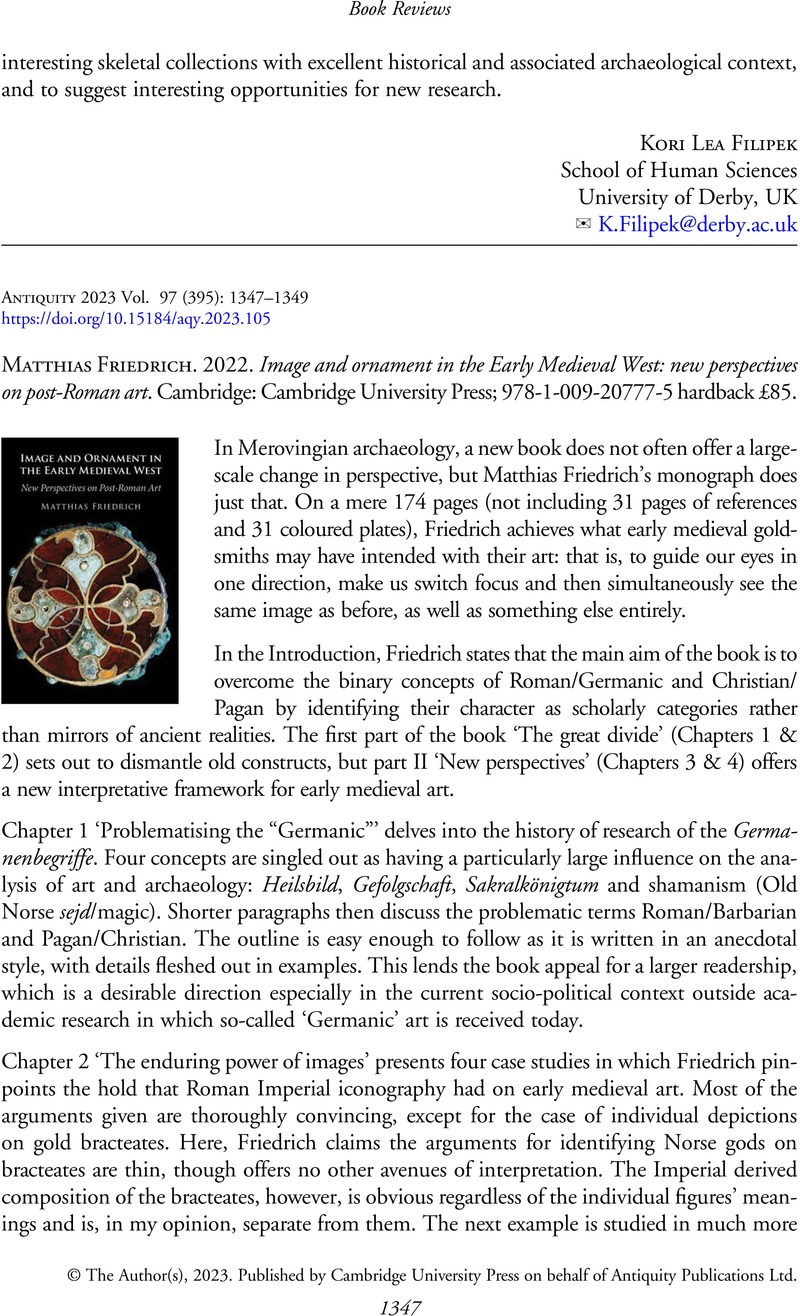No CrossRef data available.
Article contents
Matthias Friedrich. 2022. Image and ornament in the Early Medieval West: new perspectives on post-Roman art. Cambridge: Cambridge University Press; 978-1-009-20777-5 hardback £85.
Review products
Published online by Cambridge University Press: 03 August 2023
Abstract

- Type
- Book Reviews
- Information
- Copyright
- Copyright © The Author(s), 2023. Published by Cambridge University Press on behalf of Antiquity Publications Ltd.


